AI-Generated Evolution and Future Trends in Flight Attendant Uniforms
Flight attendant uniforms are more than just garments; they embody an airline's brand, prioritize safety, and mirror the spirit of the times. The advent of AI has brought about a remarkable evolution in the design and functionality of these uniforms. This article explores the intriguing journey of flight attendant attire, highlighting how AI is revolutionizing their design, functionality, and overall impact on the aviation industry. We'll delve into various styles, historical influences, and future trends, providing a thorough exploration of this emblematic aspect of aviation history.
The AI-Driven Evolution of Flight Attendant Uniforms
How AI is Transforming Uniform Design
Artificial intelligence is reshaping numerous sectors, and the design of flight attendant uniforms is no exception. AI algorithms analyze extensive data on materials, ergonomic principles, and safety standards to craft uniforms that are not only fashionable but also highly functional. AI-powered design tools help optimize the placement of pockets, integrate cooling systems, and even forecast potential wear and tear, significantly enhancing the uniforms' durability and utility.
AI's role in material selection is pivotal. These algorithms sift through countless fabric options, evaluating them for durability, comfort, and safety. For instance, AI can identify fire-resistant materials that are also lightweight and breathable, ensuring flight attendants are safe in emergencies while staying comfortable on long flights.
Ergonomic design optimization is another area where AI excels. By analyzing the physical movements of flight attendants during their duties, AI can design uniforms with strategically placed padding, flexible joints, and ergonomic cuts that reduce strain and improve mobility. This customization ensures that uniforms meet the unique demands of the job.
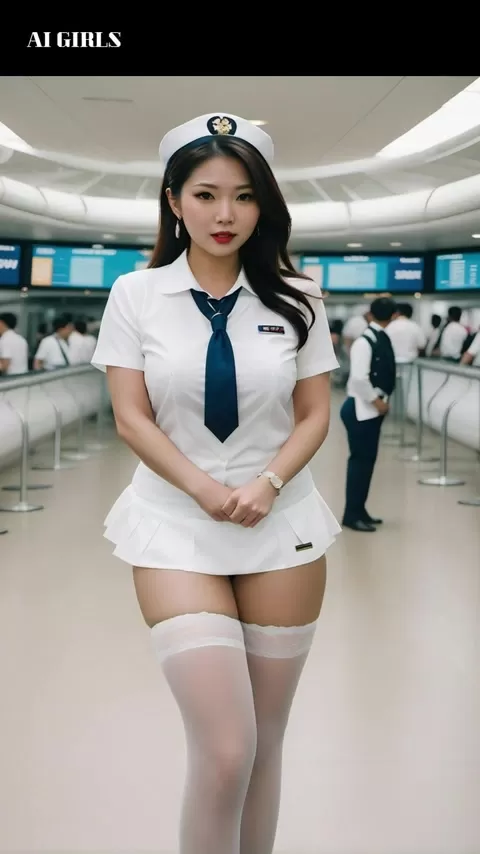
Predictive maintenance and durability are further enhanced by AI. Algorithms can predict how materials will hold up under daily stresses, allowing airlines to maintain and replace uniform components proactively. This not only cuts costs and improves safety but also extends the life of each uniform set.
Integrating AI into the design process ensures that flight attendant uniforms are aesthetically pleasing and optimized for the job's rigors.
The Historical Context of Flight Attendant Uniforms
Flight attendant uniforms have a rich and varied history, reflecting changes in social norms, technological advancements, and airline branding. Initially inspired by military attire, these uniforms projected authority and competence. As air travel became more accessible, uniforms evolved to be more stylish and welcoming, emphasizing a service-oriented approach.
In the early days of commercial aviation, uniforms often mirrored military styles, with tailored jackets, peaked caps, and formal accessories. These designs aimed to inspire confidence and convey order and discipline.
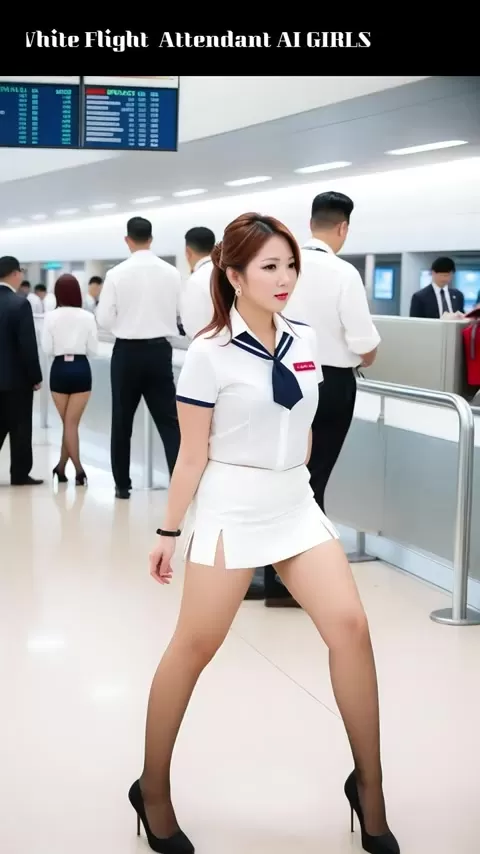
During the mid-20th century, as air travel gained popularity, flight attendant uniforms embraced glamour and elegance. Designers like Oleg Cassini and Emilio Pucci created iconic looks for airlines such as Braniff International and Alitalia. These uniforms featured vibrant colors, bold patterns, and chic silhouettes, capturing the optimism and excitement of the jet age.
Modern uniforms prioritize functionality and brand identity. They incorporate comfortable, durable materials that allow for ease of movement and long hours of work. Color palettes align with the airline's brand, while accessories like scarves, belts, and jewelry add a touch of personality and sophistication. Many airlines collaborate with renowned designers to create uniforms that are both stylish and practical.
Key Elements of Modern Uniform Designs
Modern flight attendant uniforms are meticulously designed to balance aesthetics, functionality, and brand representation. Key elements include high-performance materials, ergonomic design principles, and thoughtful accessory choices. The aim is to create uniforms that are comfortable, practical, and visually appealing.
High-performance materials are a cornerstone of modern uniforms. These advanced fabrics are durable, wrinkle-resistant, and easy to care for. Many airlines choose materials with moisture-wicking and stain-resistant properties to ensure flight attendants look polished and professional throughout their shifts. Fire-resistant materials are also a priority for safety.
Ergonomic design is crucial for ensuring flight attendants can perform their duties without discomfort or strain. Uniforms are designed with flexible joints, strategically placed padding, and ergonomic cuts that allow for a full range of motion. Pockets are thoughtfully placed for easy access to essential tools and devices.
Brand representation is reflected in the color palette, silhouette, and accessories of a flight attendant uniform. Airlines collaborate with renowned designers to create uniforms that embody their unique ethos and appeal to their target audience. For example, a luxury airline might opt for elegant, tailored designs in sophisticated colors, while a budget airline might choose more casual and practical uniforms in brighter hues.
Accessories and personalization add a touch of individuality to flight attendant uniforms. Items like scarves, ties, belts, and jewelry can enhance the uniform's sophistication. Many airlines allow for some degree of personalization, enabling flight attendants to express their style while maintaining a professional appearance. This boosts morale and enhances the customer experience.
Technological Integration in Flight Attendant Uniforms
Smart Fabrics and Wearable Technology
The integration of smart fabrics and wearable technology is revolutionizing flight attendant uniform design. These innovations enhance safety, improve communication, and provide real-time data on the well-being of flight attendants.
Smart fabrics can be embedded with sensors that detect changes in temperature, pressure, and the presence of hazardous substances. These sensors can alert flight attendants to potential safety risks, such as smoke or toxic fumes, allowing them to take swift action to protect passengers.
Wearable technology, like smartwatches and augmented reality glasses, facilitates seamless communication between flight attendants and ground staff. Real-time updates on flight schedules, passenger information, and emergency protocols can be delivered directly to flight attendants, enabling them to respond quickly and efficiently to changing circumstances.
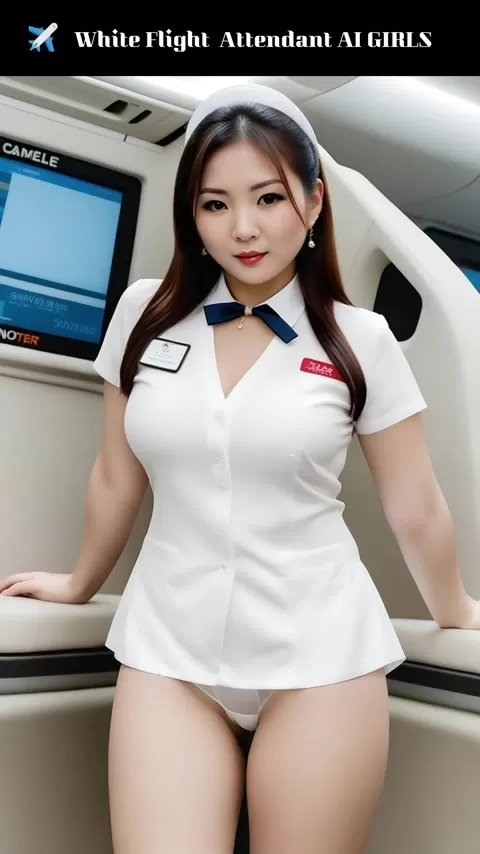
Real-time health monitoring is another benefit of wearable sensors. These devices can monitor the vital signs of flight attendants, providing real-time data on their heart rate, body temperature, and stress levels. This information can help identify potential health issues early, allowing flight attendants to take breaks or seek medical attention as needed.
Examples of integrated technology include:
- Heated garments to ensure comfort in varying cabin temperatures.
- Real-time location tracking for optimized emergency response procedures.
- Augmented reality (AR) integration to provide on-screen information during passenger assistance.
Sustainability in Flight Attendant Uniforms
With growing environmental awareness, sustainability is becoming a crucial consideration in flight attendant uniform design. Airlines are seeking eco-friendly materials, implementing recycling programs, and partnering with ethical manufacturers to reduce their environmental footprint.
Eco-friendly materials like organic cotton, recycled polyester, and innovative plant-based fabrics are gaining popularity. These materials offer excellent durability and comfort while being environmentally friendly.
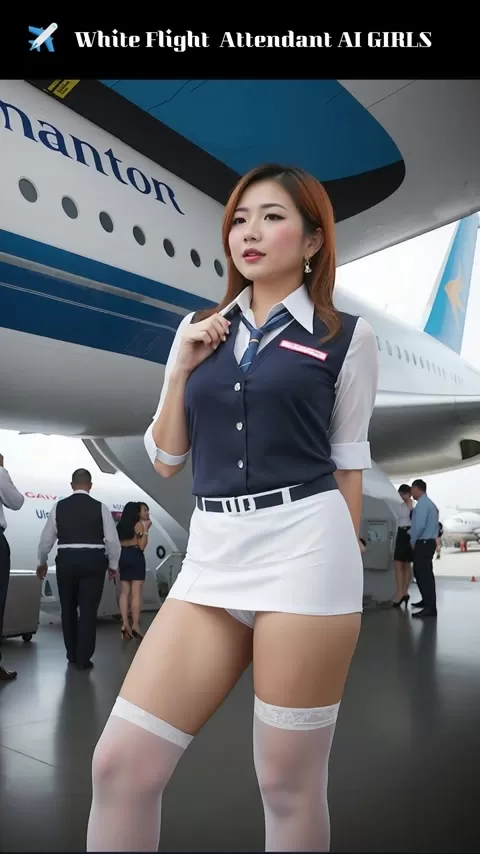
Some airlines are experimenting with fabrics made from recycled plastic bottles, diverting waste from landfills and reducing reliance on virgin materials.
Recycling programs ensure that old uniforms are properly disposed of and their components are reused or recycled whenever possible. These programs might involve partnering with textile recycling companies or donating usable uniform items to charitable organizations.
Ethical manufacturing practices are also emphasized, with airlines partnering with factories that adhere to fair labor standards and minimize environmental impact. This includes ensuring safe working conditions, paying fair wages, and implementing eco-friendly production processes.
The benefits of sustainable uniforms include reduced environmental impact, improved brand reputation, enhanced employee morale, and cost savings through increased durability and recyclability.
Personalizing Flight Attendant Uniforms: A DIY Guide
Adding Personal Touches to Standard Uniforms
While airlines have strict guidelines, flight attendants can still express individuality. Here's how to personalize without compromising professionalism:
- Accessories: Subtle jewelry, elegant watches, and sophisticated scarves are great options.
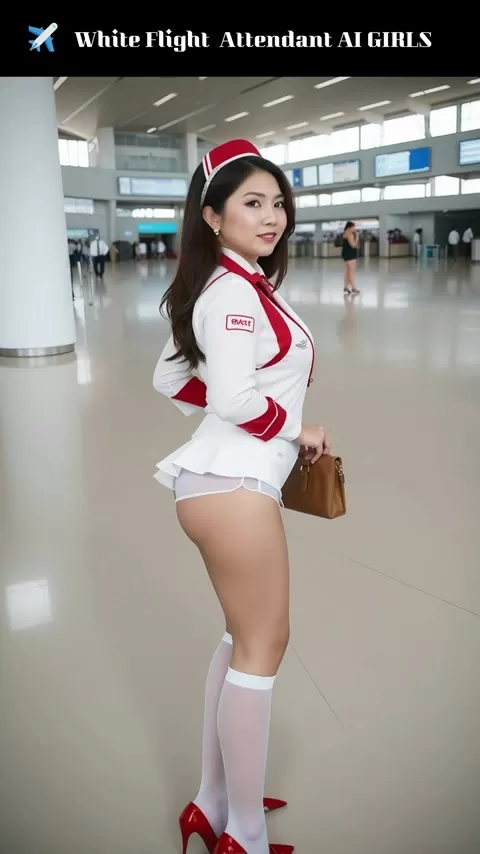 Ensure they align with the airline's color palette and brand.
Ensure they align with the airline's color palette and brand. - Hairstyles: A neat, professional hairstyle can make a significant difference. Experiment with buns, braids, or ponytails, but keep it tidy.
- Makeup: Natural, polished makeup enhances your appearance without being over the top. Focus on a fresh, well-groomed look.
- Shoes: Choose comfortable, stylish shoes that meet the airline's requirements. Well-maintained shoes can make a statement.
- Name Tag: A personalized name tag can be both functional and stylish. Ensure it's legible and appropriately sized.
Understanding the Costs of Flight Attendant Uniforms
Factors Influencing Uniform Costs
The cost of flight attendant uniforms can vary significantly depending on several factors. These include the quality of materials used, the complexity of the design, the number of uniform pieces provided, and the airline's branding strategy.
High-performance materials, such as those with moisture-wicking, stain-resistant, or fire-resistant properties, typically come at a premium. However, these materials can also extend the uniform's lifespan, resulting in long-term cost savings.
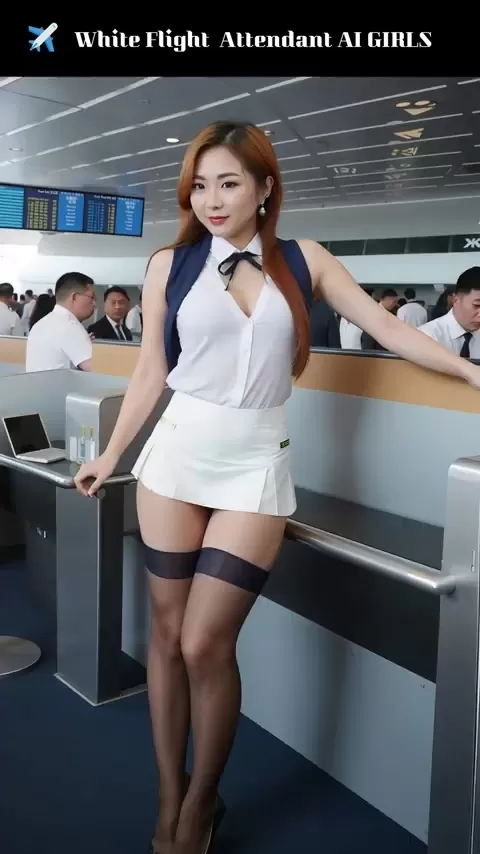
Uniforms with intricate designs, tailored silhouettes, and custom details tend to be more expensive to produce. Airlines that collaborate with renowned designers may also incur higher design fees.
The number of uniform pieces provided to each flight attendant can affect the overall cost. A comprehensive uniform set might include jackets, skirts, pants, shirts, vests, scarves, ties, belts, and shoes, each adding to the total expense.
Airlines that prioritize brand representation through their uniforms may be willing to invest more in high-quality materials, custom designs, and accessories that align with their brand identity. This can result in more expensive uniforms but also enhance the airline's image and customer experience.
The Pros and Cons of AI-Designed Flight Attendant Uniforms
Pros
- Enhanced safety features
- Improved comfort and ergonomics
- Better brand representation
- Increased efficiency and productivity
- Sustainable material options
Cons
- High initial costs
- Potential for job displacement
- Dependence on technology
- Concerns about data privacy
- Lack of personal touch in design
Core Features of High-Quality Flight Attendant Uniforms
Essential Features for Comfort and Safety
High-quality flight attendant uniforms are characterized by essential features that ensure comfort, safety, and professionalism. These features include durable materials, ergonomic design, functional pockets, and safety enhancements.
Durable materials are crucial for uniforms to withstand daily wear and tear. This includes fabrics that are resistant to wrinkles, stains, and fading, ensuring that flight attendants always look polished and professional.
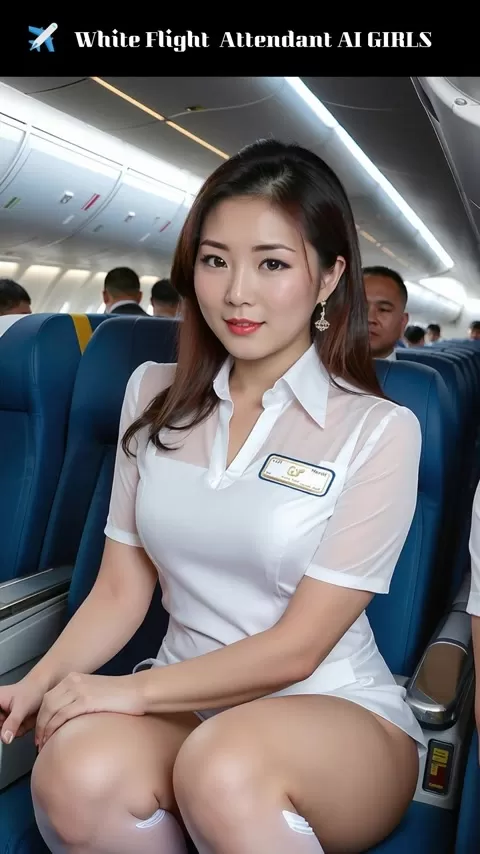
Ergonomic design is vital for ensuring that flight attendants can perform their duties without discomfort or strain. Uniforms should be designed with flexible joints, strategically placed padding, and ergonomic cuts that allow for a full range of motion.
Functional pockets are essential for flight attendants to carry essential tools and devices. Pockets should be strategically placed for easy access and sized appropriately for items like pens, notepads, and mobile devices.
Safety enhancements, such as fire-resistant materials, reflective accents, and integrated communication devices, are crucial for protecting flight attendants in emergency situations. These features can improve visibility, facilitate communication, and provide an extra layer of protection in potentially hazardous environments.
Real-World Use Cases of Flight Attendant Uniforms
Practical Applications in the Aviation Industry
Flight attendant uniforms serve various practical purposes in the aviation industry, from conveying professionalism and authority to ensuring safety and comfort. These uniforms are designed to meet the unique demands of the job, providing flight attendants with the tools and protection they need to perform their duties effectively.
Flight attendant uniforms play a crucial role in conveying professionalism and authority, inspiring confidence in passengers and projecting a positive image of the airline. Well-designed uniforms can create a sense of trust and reassurance, helping to ease passenger anxieties and enhance the overall travel experience.

Safety is a top priority in the aviation industry, and flight attendant uniforms are designed with this in mind. Fire-resistant materials, reflective accents, and integrated communication devices can help protect flight attendants in emergency situations and improve their ability to respond quickly and effectively.
Providing comfort is essential, as flight attendants spend long hours on their feet, often in cramped and uncomfortable environments. Uniforms made from breathable, moisture-wicking materials can help keep flight attendants cool and dry, while ergonomic designs can reduce strain and improve mobility.
Promoting brand identity is another important function of flight attendant uniforms. These uniforms help differentiate an airline from its competitors and create a memorable impression on passengers. Uniforms can be designed to reflect the airline's values, target audience, and overall ethos, reinforcing its brand message and enhancing customer loyalty.
FAQ
What is the typical lifespan of a flight attendant uniform?
The typical lifespan of a flight attendant uniform is around two to three years, depending on the quality of materials, the frequency of wear, and the airline's uniform replacement policy. High-quality uniforms made from durable materials may last longer, while those made from less expensive fabrics may need to be replaced more frequently.
How do airlines ensure the comfort of flight attendant uniforms?
Airlines prioritize the comfort of flight attendant uniforms by using breathable, moisture-wicking materials, ergonomic designs, and flexible construction techniques. Uniforms are often tested and refined to ensure they meet the comfort requirements of flight attendants during long flights and varying cabin conditions.
Are there regulations regarding the design and materials of flight attendant uniforms?
Yes, there are regulations regarding the design and materials of flight attendant uniforms, particularly concerning safety aspects. Fire-resistant materials are often mandated to protect flight attendants in emergency situations, and design regulations may dictate the visibility and functionality of certain uniform elements.
What are some emerging trends in flight attendant uniform design?
Emerging trends in flight attendant uniform design include the integration of smart fabrics and wearable technology, a greater emphasis on sustainability, and a move towards more personalized and adaptable uniform options. These trends reflect a desire to enhance safety, improve comfort, and align with evolving social and environmental values.
Related Questions
How do flight attendant uniforms contribute to passenger perceptions of an airline?
Flight attendant uniforms significantly influence passenger perceptions of an airline by conveying professionalism, brand identity, and attention to detail. A well-designed and well-maintained uniform can create a positive impression and enhance the overall customer experience, while a poorly designed or outdated uniform can detract from the airline's image and undermine passenger confidence. Studies have shown that passengers often associate the appearance of flight attendants with the overall quality and reliability of the airline. Uniforms that are stylish, functional, and reflective of the airline's brand values can help to create a sense of trust and reassurance, contributing to a more positive and memorable travel experience.
Brand Representation and Passenger Expectations: The design of a flight attendant uniform can communicate key aspects of an airline’s brand identity, such as luxury, innovation, or environmental consciousness. For example, an airline that emphasizes sustainability may opt for uniforms made from eco-friendly materials, while an airline known for its cutting-edge technology might incorporate smart fabrics and wearable devices into its uniforms. By aligning the uniform design with its brand values, an airline can reinforce its message and attract passengers who share those values.
Professionalism and Passenger Confidence: Flight attendant uniforms are designed to convey professionalism and authority, inspiring confidence in passengers and projecting a positive image of the airline. Uniforms that are tailored, well-maintained, and consistent with industry standards can help to create a sense of order and discipline, reassuring passengers that they are in safe hands. Details like clean lines, polished accessories, and impeccable grooming further enhance the perception of professionalism and competence.
Cultural Sensitivity and Passenger Comfort: In addition to aesthetics and brand representation, flight attendant uniforms must also consider cultural sensitivities and passenger comfort. Uniforms that are too revealing, culturally inappropriate, or impractical can alienate passengers and detract from their overall travel experience. Airlines must carefully consider the cultural context in which they operate and design uniforms that are respectful, inclusive, and aligned with passenger expectations.
What are the ethical considerations in the production of flight attendant uniforms?
Ethical considerations in the production of flight attendant uniforms encompass a range of factors, including fair labor practices, environmental sustainability, and responsible sourcing of materials. Airlines have a responsibility to ensure that their uniforms are produced in a way that respects the rights of workers, minimizes environmental impact, and promotes ethical business practices.
Fair Labor Practices: Ensuring fair labor practices in the production of flight attendant uniforms means partnering with factories that adhere to safe working conditions, pay fair wages, and respect workers' rights to organize and bargain collectively. This includes avoiding factories that employ child labor, forced labor, or any other form of exploitation. Transparency and accountability are essential for verifying that labor standards are being met throughout the supply chain.
Environmental Sustainability: Environmental sustainability in uniform production involves using eco-friendly materials, minimizing waste, and reducing the environmental impact of manufacturing processes. This includes opting for organic cotton, recycled polyester, and innovative plant-based fabrics, as well as implementing water and energy conservation measures in factories. Airlines can also support recycling programs to ensure that old uniforms are properly disposed of and their components are reused or recycled whenever possible.
Responsible Sourcing of Materials: Responsible sourcing of materials involves ensuring that raw materials used in uniform production are obtained from sustainable and ethical sources. This includes avoiding materials that are linked to deforestation, habitat destruction, or other environmental harms. Airlines can also support suppliers that promote biodiversity conservation, protect endangered species, and implement sustainable land management practices.
Compliance and Transparency: To ensure ethical standards are upheld, airlines should establish clear guidelines and expectations for their uniform suppliers, conduct regular audits to verify compliance, and be transparent about their sourcing and production practices. This can involve partnering with independent certification organizations or publishing sustainability reports that detail their efforts to promote ethical and responsible business practices.
Related article
 Best AI Tools for Creating Educational Infographics – Design Tips & Techniques
In today's digitally-driven educational landscape, infographics have emerged as a transformative communication medium that converts complex information into visually appealing, easily understandable formats. AI technology is revolutionizing how educa
Best AI Tools for Creating Educational Infographics – Design Tips & Techniques
In today's digitally-driven educational landscape, infographics have emerged as a transformative communication medium that converts complex information into visually appealing, easily understandable formats. AI technology is revolutionizing how educa
 Topaz DeNoise AI: Best Noise Reduction Tool in 2025 – Full Guide
In the competitive world of digital photography, image clarity remains paramount. Photographers at all skill levels contend with digital noise that compromises otherwise excellent shots. Topaz DeNoise AI emerges as a cutting-edge solution, harnessing
Topaz DeNoise AI: Best Noise Reduction Tool in 2025 – Full Guide
In the competitive world of digital photography, image clarity remains paramount. Photographers at all skill levels contend with digital noise that compromises otherwise excellent shots. Topaz DeNoise AI emerges as a cutting-edge solution, harnessing
 Master Emerald Kaizo Nuzlocke: Ultimate Survival & Strategy Guide
Emerald Kaizo stands as one of the most formidable Pokémon ROM hacks ever conceived. While attempting a Nuzlocke run exponentially increases the challenge, victory remains achievable through meticulous planning and strategic execution. This definitiv
Comments (24)
0/200
Master Emerald Kaizo Nuzlocke: Ultimate Survival & Strategy Guide
Emerald Kaizo stands as one of the most formidable Pokémon ROM hacks ever conceived. While attempting a Nuzlocke run exponentially increases the challenge, victory remains achievable through meticulous planning and strategic execution. This definitiv
Comments (24)
0/200
![KevinScott]() KevinScott
KevinScott
 August 26, 2025 at 3:01:22 PM EDT
August 26, 2025 at 3:01:22 PM EDT
AI designing flight attendant uniforms is wild! Love how it blends style with safety. Curious if it'll predict retro vibes coming back. ✈️


 0
0
![AlbertWilson]() AlbertWilson
AlbertWilson
 August 24, 2025 at 3:01:24 PM EDT
August 24, 2025 at 3:01:24 PM EDT
AI designing flight attendant uniforms is wild! Love how it blends style with safety, but wonder if it’ll make them too futuristic. 😎


 0
0
![GaryPerez]() GaryPerez
GaryPerez
 July 27, 2025 at 9:20:02 PM EDT
July 27, 2025 at 9:20:02 PM EDT
AI designing flight attendant uniforms is wild! Imagine outfits that adapt to weather or passenger vibes—super cool but kinda creepy if it gets too personalized. 😅 Excited to see where this trend flies next!


 0
0
![ChristopherDavis]() ChristopherDavis
ChristopherDavis
 July 27, 2025 at 9:19:05 PM EDT
July 27, 2025 at 9:19:05 PM EDT
Les uniformes des hôtesses de l'air évoluent avec l'IA, c'est fascinant ! J'adore comment la technologie rend les designs plus pratiques tout en restant élégants. Mais est-ce que ça va vraiment améliorer leur quotidien ou juste faire joli ? 😊


 0
0
![RogerPerez]() RogerPerez
RogerPerez
 April 21, 2025 at 10:23:21 AM EDT
April 21, 2025 at 10:23:21 AM EDT
AI가 보여주는 승무원 유니폼에 대한 시각이 정말 흥미로워요! 기술이 스타일과 안전성을 어떻게 융합하는지 보는 게 멋져요. 다만, 역사적 맥락이 더 있었으면 좋겠어요. 패션과 기술에 관심 있는 사람들에게 좋은 읽을거리예요! 👗✈️


 0
0
![WillieJones]() WillieJones
WillieJones
 April 21, 2025 at 8:28:16 AM EDT
April 21, 2025 at 8:28:16 AM EDT
AIによって生成された客室乗務員の制服の進化はとても興味深いです!AIがファッションや機能性にどのように影響を与えるかを見るのはクールです。ただ、実際に導入されたデザインの例がもっと欲しいです。それでも、良い読み物です!👗✈️


 0
0
Flight attendant uniforms are more than just garments; they embody an airline's brand, prioritize safety, and mirror the spirit of the times. The advent of AI has brought about a remarkable evolution in the design and functionality of these uniforms. This article explores the intriguing journey of flight attendant attire, highlighting how AI is revolutionizing their design, functionality, and overall impact on the aviation industry. We'll delve into various styles, historical influences, and future trends, providing a thorough exploration of this emblematic aspect of aviation history.
The AI-Driven Evolution of Flight Attendant Uniforms
How AI is Transforming Uniform Design
Artificial intelligence is reshaping numerous sectors, and the design of flight attendant uniforms is no exception. AI algorithms analyze extensive data on materials, ergonomic principles, and safety standards to craft uniforms that are not only fashionable but also highly functional. AI-powered design tools help optimize the placement of pockets, integrate cooling systems, and even forecast potential wear and tear, significantly enhancing the uniforms' durability and utility.
AI's role in material selection is pivotal. These algorithms sift through countless fabric options, evaluating them for durability, comfort, and safety. For instance, AI can identify fire-resistant materials that are also lightweight and breathable, ensuring flight attendants are safe in emergencies while staying comfortable on long flights.
Ergonomic design optimization is another area where AI excels. By analyzing the physical movements of flight attendants during their duties, AI can design uniforms with strategically placed padding, flexible joints, and ergonomic cuts that reduce strain and improve mobility. This customization ensures that uniforms meet the unique demands of the job.

Predictive maintenance and durability are further enhanced by AI. Algorithms can predict how materials will hold up under daily stresses, allowing airlines to maintain and replace uniform components proactively. This not only cuts costs and improves safety but also extends the life of each uniform set.
Integrating AI into the design process ensures that flight attendant uniforms are aesthetically pleasing and optimized for the job's rigors.
The Historical Context of Flight Attendant Uniforms
Flight attendant uniforms have a rich and varied history, reflecting changes in social norms, technological advancements, and airline branding. Initially inspired by military attire, these uniforms projected authority and competence. As air travel became more accessible, uniforms evolved to be more stylish and welcoming, emphasizing a service-oriented approach.
In the early days of commercial aviation, uniforms often mirrored military styles, with tailored jackets, peaked caps, and formal accessories. These designs aimed to inspire confidence and convey order and discipline.

During the mid-20th century, as air travel gained popularity, flight attendant uniforms embraced glamour and elegance. Designers like Oleg Cassini and Emilio Pucci created iconic looks for airlines such as Braniff International and Alitalia. These uniforms featured vibrant colors, bold patterns, and chic silhouettes, capturing the optimism and excitement of the jet age.
Modern uniforms prioritize functionality and brand identity. They incorporate comfortable, durable materials that allow for ease of movement and long hours of work. Color palettes align with the airline's brand, while accessories like scarves, belts, and jewelry add a touch of personality and sophistication. Many airlines collaborate with renowned designers to create uniforms that are both stylish and practical.
Key Elements of Modern Uniform Designs
Modern flight attendant uniforms are meticulously designed to balance aesthetics, functionality, and brand representation. Key elements include high-performance materials, ergonomic design principles, and thoughtful accessory choices. The aim is to create uniforms that are comfortable, practical, and visually appealing.
High-performance materials are a cornerstone of modern uniforms. These advanced fabrics are durable, wrinkle-resistant, and easy to care for. Many airlines choose materials with moisture-wicking and stain-resistant properties to ensure flight attendants look polished and professional throughout their shifts. Fire-resistant materials are also a priority for safety.
Ergonomic design is crucial for ensuring flight attendants can perform their duties without discomfort or strain. Uniforms are designed with flexible joints, strategically placed padding, and ergonomic cuts that allow for a full range of motion. Pockets are thoughtfully placed for easy access to essential tools and devices.
Brand representation is reflected in the color palette, silhouette, and accessories of a flight attendant uniform. Airlines collaborate with renowned designers to create uniforms that embody their unique ethos and appeal to their target audience. For example, a luxury airline might opt for elegant, tailored designs in sophisticated colors, while a budget airline might choose more casual and practical uniforms in brighter hues.
Accessories and personalization add a touch of individuality to flight attendant uniforms. Items like scarves, ties, belts, and jewelry can enhance the uniform's sophistication. Many airlines allow for some degree of personalization, enabling flight attendants to express their style while maintaining a professional appearance. This boosts morale and enhances the customer experience.
Technological Integration in Flight Attendant Uniforms
Smart Fabrics and Wearable Technology
The integration of smart fabrics and wearable technology is revolutionizing flight attendant uniform design. These innovations enhance safety, improve communication, and provide real-time data on the well-being of flight attendants.
Smart fabrics can be embedded with sensors that detect changes in temperature, pressure, and the presence of hazardous substances. These sensors can alert flight attendants to potential safety risks, such as smoke or toxic fumes, allowing them to take swift action to protect passengers.
Wearable technology, like smartwatches and augmented reality glasses, facilitates seamless communication between flight attendants and ground staff. Real-time updates on flight schedules, passenger information, and emergency protocols can be delivered directly to flight attendants, enabling them to respond quickly and efficiently to changing circumstances.

Real-time health monitoring is another benefit of wearable sensors. These devices can monitor the vital signs of flight attendants, providing real-time data on their heart rate, body temperature, and stress levels. This information can help identify potential health issues early, allowing flight attendants to take breaks or seek medical attention as needed.
Examples of integrated technology include:
- Heated garments to ensure comfort in varying cabin temperatures.
- Real-time location tracking for optimized emergency response procedures.
- Augmented reality (AR) integration to provide on-screen information during passenger assistance.
Sustainability in Flight Attendant Uniforms
With growing environmental awareness, sustainability is becoming a crucial consideration in flight attendant uniform design. Airlines are seeking eco-friendly materials, implementing recycling programs, and partnering with ethical manufacturers to reduce their environmental footprint.
Eco-friendly materials like organic cotton, recycled polyester, and innovative plant-based fabrics are gaining popularity. These materials offer excellent durability and comfort while being environmentally friendly.

Some airlines are experimenting with fabrics made from recycled plastic bottles, diverting waste from landfills and reducing reliance on virgin materials.
Recycling programs ensure that old uniforms are properly disposed of and their components are reused or recycled whenever possible. These programs might involve partnering with textile recycling companies or donating usable uniform items to charitable organizations.
Ethical manufacturing practices are also emphasized, with airlines partnering with factories that adhere to fair labor standards and minimize environmental impact. This includes ensuring safe working conditions, paying fair wages, and implementing eco-friendly production processes.
The benefits of sustainable uniforms include reduced environmental impact, improved brand reputation, enhanced employee morale, and cost savings through increased durability and recyclability.
Personalizing Flight Attendant Uniforms: A DIY Guide
Adding Personal Touches to Standard Uniforms
While airlines have strict guidelines, flight attendants can still express individuality. Here's how to personalize without compromising professionalism:
- Accessories: Subtle jewelry, elegant watches, and sophisticated scarves are great options.
 Ensure they align with the airline's color palette and brand.
Ensure they align with the airline's color palette and brand. - Hairstyles: A neat, professional hairstyle can make a significant difference. Experiment with buns, braids, or ponytails, but keep it tidy.
- Makeup: Natural, polished makeup enhances your appearance without being over the top. Focus on a fresh, well-groomed look.
- Shoes: Choose comfortable, stylish shoes that meet the airline's requirements. Well-maintained shoes can make a statement.
- Name Tag: A personalized name tag can be both functional and stylish. Ensure it's legible and appropriately sized.
Understanding the Costs of Flight Attendant Uniforms
Factors Influencing Uniform Costs
The cost of flight attendant uniforms can vary significantly depending on several factors. These include the quality of materials used, the complexity of the design, the number of uniform pieces provided, and the airline's branding strategy.
High-performance materials, such as those with moisture-wicking, stain-resistant, or fire-resistant properties, typically come at a premium. However, these materials can also extend the uniform's lifespan, resulting in long-term cost savings.

Uniforms with intricate designs, tailored silhouettes, and custom details tend to be more expensive to produce. Airlines that collaborate with renowned designers may also incur higher design fees.
The number of uniform pieces provided to each flight attendant can affect the overall cost. A comprehensive uniform set might include jackets, skirts, pants, shirts, vests, scarves, ties, belts, and shoes, each adding to the total expense.
Airlines that prioritize brand representation through their uniforms may be willing to invest more in high-quality materials, custom designs, and accessories that align with their brand identity. This can result in more expensive uniforms but also enhance the airline's image and customer experience.
The Pros and Cons of AI-Designed Flight Attendant Uniforms
Pros
- Enhanced safety features
- Improved comfort and ergonomics
- Better brand representation
- Increased efficiency and productivity
- Sustainable material options
Cons
- High initial costs
- Potential for job displacement
- Dependence on technology
- Concerns about data privacy
- Lack of personal touch in design
Core Features of High-Quality Flight Attendant Uniforms
Essential Features for Comfort and Safety
High-quality flight attendant uniforms are characterized by essential features that ensure comfort, safety, and professionalism. These features include durable materials, ergonomic design, functional pockets, and safety enhancements.
Durable materials are crucial for uniforms to withstand daily wear and tear. This includes fabrics that are resistant to wrinkles, stains, and fading, ensuring that flight attendants always look polished and professional.

Ergonomic design is vital for ensuring that flight attendants can perform their duties without discomfort or strain. Uniforms should be designed with flexible joints, strategically placed padding, and ergonomic cuts that allow for a full range of motion.
Functional pockets are essential for flight attendants to carry essential tools and devices. Pockets should be strategically placed for easy access and sized appropriately for items like pens, notepads, and mobile devices.
Safety enhancements, such as fire-resistant materials, reflective accents, and integrated communication devices, are crucial for protecting flight attendants in emergency situations. These features can improve visibility, facilitate communication, and provide an extra layer of protection in potentially hazardous environments.
Real-World Use Cases of Flight Attendant Uniforms
Practical Applications in the Aviation Industry
Flight attendant uniforms serve various practical purposes in the aviation industry, from conveying professionalism and authority to ensuring safety and comfort. These uniforms are designed to meet the unique demands of the job, providing flight attendants with the tools and protection they need to perform their duties effectively.
Flight attendant uniforms play a crucial role in conveying professionalism and authority, inspiring confidence in passengers and projecting a positive image of the airline. Well-designed uniforms can create a sense of trust and reassurance, helping to ease passenger anxieties and enhance the overall travel experience.

Safety is a top priority in the aviation industry, and flight attendant uniforms are designed with this in mind. Fire-resistant materials, reflective accents, and integrated communication devices can help protect flight attendants in emergency situations and improve their ability to respond quickly and effectively.
Providing comfort is essential, as flight attendants spend long hours on their feet, often in cramped and uncomfortable environments. Uniforms made from breathable, moisture-wicking materials can help keep flight attendants cool and dry, while ergonomic designs can reduce strain and improve mobility.
Promoting brand identity is another important function of flight attendant uniforms. These uniforms help differentiate an airline from its competitors and create a memorable impression on passengers. Uniforms can be designed to reflect the airline's values, target audience, and overall ethos, reinforcing its brand message and enhancing customer loyalty.
FAQ
What is the typical lifespan of a flight attendant uniform?
The typical lifespan of a flight attendant uniform is around two to three years, depending on the quality of materials, the frequency of wear, and the airline's uniform replacement policy. High-quality uniforms made from durable materials may last longer, while those made from less expensive fabrics may need to be replaced more frequently.
How do airlines ensure the comfort of flight attendant uniforms?
Airlines prioritize the comfort of flight attendant uniforms by using breathable, moisture-wicking materials, ergonomic designs, and flexible construction techniques. Uniforms are often tested and refined to ensure they meet the comfort requirements of flight attendants during long flights and varying cabin conditions.
Are there regulations regarding the design and materials of flight attendant uniforms?
Yes, there are regulations regarding the design and materials of flight attendant uniforms, particularly concerning safety aspects. Fire-resistant materials are often mandated to protect flight attendants in emergency situations, and design regulations may dictate the visibility and functionality of certain uniform elements.
What are some emerging trends in flight attendant uniform design?
Emerging trends in flight attendant uniform design include the integration of smart fabrics and wearable technology, a greater emphasis on sustainability, and a move towards more personalized and adaptable uniform options. These trends reflect a desire to enhance safety, improve comfort, and align with evolving social and environmental values.
Related Questions
How do flight attendant uniforms contribute to passenger perceptions of an airline?
Flight attendant uniforms significantly influence passenger perceptions of an airline by conveying professionalism, brand identity, and attention to detail. A well-designed and well-maintained uniform can create a positive impression and enhance the overall customer experience, while a poorly designed or outdated uniform can detract from the airline's image and undermine passenger confidence. Studies have shown that passengers often associate the appearance of flight attendants with the overall quality and reliability of the airline. Uniforms that are stylish, functional, and reflective of the airline's brand values can help to create a sense of trust and reassurance, contributing to a more positive and memorable travel experience.
Brand Representation and Passenger Expectations: The design of a flight attendant uniform can communicate key aspects of an airline’s brand identity, such as luxury, innovation, or environmental consciousness. For example, an airline that emphasizes sustainability may opt for uniforms made from eco-friendly materials, while an airline known for its cutting-edge technology might incorporate smart fabrics and wearable devices into its uniforms. By aligning the uniform design with its brand values, an airline can reinforce its message and attract passengers who share those values.
Professionalism and Passenger Confidence: Flight attendant uniforms are designed to convey professionalism and authority, inspiring confidence in passengers and projecting a positive image of the airline. Uniforms that are tailored, well-maintained, and consistent with industry standards can help to create a sense of order and discipline, reassuring passengers that they are in safe hands. Details like clean lines, polished accessories, and impeccable grooming further enhance the perception of professionalism and competence.
Cultural Sensitivity and Passenger Comfort: In addition to aesthetics and brand representation, flight attendant uniforms must also consider cultural sensitivities and passenger comfort. Uniforms that are too revealing, culturally inappropriate, or impractical can alienate passengers and detract from their overall travel experience. Airlines must carefully consider the cultural context in which they operate and design uniforms that are respectful, inclusive, and aligned with passenger expectations.
What are the ethical considerations in the production of flight attendant uniforms?
Ethical considerations in the production of flight attendant uniforms encompass a range of factors, including fair labor practices, environmental sustainability, and responsible sourcing of materials. Airlines have a responsibility to ensure that their uniforms are produced in a way that respects the rights of workers, minimizes environmental impact, and promotes ethical business practices.
Fair Labor Practices: Ensuring fair labor practices in the production of flight attendant uniforms means partnering with factories that adhere to safe working conditions, pay fair wages, and respect workers' rights to organize and bargain collectively. This includes avoiding factories that employ child labor, forced labor, or any other form of exploitation. Transparency and accountability are essential for verifying that labor standards are being met throughout the supply chain.
Environmental Sustainability: Environmental sustainability in uniform production involves using eco-friendly materials, minimizing waste, and reducing the environmental impact of manufacturing processes. This includes opting for organic cotton, recycled polyester, and innovative plant-based fabrics, as well as implementing water and energy conservation measures in factories. Airlines can also support recycling programs to ensure that old uniforms are properly disposed of and their components are reused or recycled whenever possible.
Responsible Sourcing of Materials: Responsible sourcing of materials involves ensuring that raw materials used in uniform production are obtained from sustainable and ethical sources. This includes avoiding materials that are linked to deforestation, habitat destruction, or other environmental harms. Airlines can also support suppliers that promote biodiversity conservation, protect endangered species, and implement sustainable land management practices.
Compliance and Transparency: To ensure ethical standards are upheld, airlines should establish clear guidelines and expectations for their uniform suppliers, conduct regular audits to verify compliance, and be transparent about their sourcing and production practices. This can involve partnering with independent certification organizations or publishing sustainability reports that detail their efforts to promote ethical and responsible business practices.
 Best AI Tools for Creating Educational Infographics – Design Tips & Techniques
In today's digitally-driven educational landscape, infographics have emerged as a transformative communication medium that converts complex information into visually appealing, easily understandable formats. AI technology is revolutionizing how educa
Best AI Tools for Creating Educational Infographics – Design Tips & Techniques
In today's digitally-driven educational landscape, infographics have emerged as a transformative communication medium that converts complex information into visually appealing, easily understandable formats. AI technology is revolutionizing how educa
 Topaz DeNoise AI: Best Noise Reduction Tool in 2025 – Full Guide
In the competitive world of digital photography, image clarity remains paramount. Photographers at all skill levels contend with digital noise that compromises otherwise excellent shots. Topaz DeNoise AI emerges as a cutting-edge solution, harnessing
Topaz DeNoise AI: Best Noise Reduction Tool in 2025 – Full Guide
In the competitive world of digital photography, image clarity remains paramount. Photographers at all skill levels contend with digital noise that compromises otherwise excellent shots. Topaz DeNoise AI emerges as a cutting-edge solution, harnessing
 Master Emerald Kaizo Nuzlocke: Ultimate Survival & Strategy Guide
Emerald Kaizo stands as one of the most formidable Pokémon ROM hacks ever conceived. While attempting a Nuzlocke run exponentially increases the challenge, victory remains achievable through meticulous planning and strategic execution. This definitiv
Master Emerald Kaizo Nuzlocke: Ultimate Survival & Strategy Guide
Emerald Kaizo stands as one of the most formidable Pokémon ROM hacks ever conceived. While attempting a Nuzlocke run exponentially increases the challenge, victory remains achievable through meticulous planning and strategic execution. This definitiv
 August 26, 2025 at 3:01:22 PM EDT
August 26, 2025 at 3:01:22 PM EDT
AI designing flight attendant uniforms is wild! Love how it blends style with safety. Curious if it'll predict retro vibes coming back. ✈️


 0
0
 August 24, 2025 at 3:01:24 PM EDT
August 24, 2025 at 3:01:24 PM EDT
AI designing flight attendant uniforms is wild! Love how it blends style with safety, but wonder if it’ll make them too futuristic. 😎


 0
0
 July 27, 2025 at 9:20:02 PM EDT
July 27, 2025 at 9:20:02 PM EDT
AI designing flight attendant uniforms is wild! Imagine outfits that adapt to weather or passenger vibes—super cool but kinda creepy if it gets too personalized. 😅 Excited to see where this trend flies next!


 0
0
 July 27, 2025 at 9:19:05 PM EDT
July 27, 2025 at 9:19:05 PM EDT
Les uniformes des hôtesses de l'air évoluent avec l'IA, c'est fascinant ! J'adore comment la technologie rend les designs plus pratiques tout en restant élégants. Mais est-ce que ça va vraiment améliorer leur quotidien ou juste faire joli ? 😊


 0
0
 April 21, 2025 at 10:23:21 AM EDT
April 21, 2025 at 10:23:21 AM EDT
AI가 보여주는 승무원 유니폼에 대한 시각이 정말 흥미로워요! 기술이 스타일과 안전성을 어떻게 융합하는지 보는 게 멋져요. 다만, 역사적 맥락이 더 있었으면 좋겠어요. 패션과 기술에 관심 있는 사람들에게 좋은 읽을거리예요! 👗✈️


 0
0
 April 21, 2025 at 8:28:16 AM EDT
April 21, 2025 at 8:28:16 AM EDT
AIによって生成された客室乗務員の制服の進化はとても興味深いです!AIがファッションや機能性にどのように影響を与えるかを見るのはクールです。ただ、実際に導入されたデザインの例がもっと欲しいです。それでも、良い読み物です!👗✈️


 0
0





























